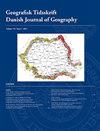是什么塑造了发明家的结构?瑞典专利发明人的生活史分析
IF 1.1
4区 社会学
Q4 ENVIRONMENTAL STUDIES
Geografisk Tidsskrift-Danish Journal of Geography
Pub Date : 2016-07-02
DOI:10.1080/00167223.2016.1180998
引用次数: 3
摘要
通过对瑞典发明家的生活史访谈,本文研究了对发明能力发展至关重要的开创性社会文化因素和环境。这种方法使发明者能够反思和描述他们自己认为形成了他们的发明能力的生活环境、演员和事件。这篇文章的主要发现是,儿童早期的社会文化环境,特别是父母和祖父母的教育背景或技能,在塑造发明家的解剖结构方面发挥了重要作用。此外,发明家的最终教育的社会环境,无论是小学还是大学,是一个开创性的因素,在发明创造的发展,考虑到敬业的老师,同学和导师的重要性。最后,工作场所的平等主义组织结构和坚实的知识基础设施也是重要的影响因素。研究表明,对于不同类型的发明家,这些开创性环境的本质是不同的,因此提出了三种描述性的理想发明家类型,即车间发明家、工程发明家和学术发明家。本文章由计算机程序翻译,如有差异,请以英文原文为准。
What shapes the anatomy of inventors? A life-history analysis of Swedish patent inventors
Abstract Using life-history interviews on a sample of Swedish inventors, this article studies seminal sociocultural factors and milieus that are critical for the development of inventive capacities. This approach allows the inventors to reflect on and describe the milieus, actors and events in their lives which they themselves believe have formed their inventive capacities. The main findings of the article are that the sociocultural milieus of early childhood, especially the educational backgrounds or skills of parents and grandparents, play an important role in shaping the anatomy of inventors. Further, the social milieu of an inventor’s final education, whether elementary school or university, is a seminal factor in the development of inventive creativity, given the importance of dedicated teachers, co-students and supervisors. Finally, egalitarian organizational structures in the workplace and a solid knowledge infrastructure are also important and influential factors. The study shows that the essence of these seminal milieus varies for different types of inventor, hence three descriptive ideal types of inventor are presented, namely the workshop inventor, the engineering inventor and the academic inventor.
求助全文
通过发布文献求助,成功后即可免费获取论文全文。
去求助
来源期刊
CiteScore
5.20
自引率
0.00%
发文量
5
期刊介绍:
DJG is an interdisciplinary, international journal that publishes peer reviewed research articles on all aspects of geography. Coverage includes such topics as human geography, physical geography, human-environment interactions, Earth Observation, and Geographical Information Science. DJG also welcomes articles which address geographical perspectives of e.g. environmental studies, development studies, planning, landscape ecology and sustainability science. In addition to full-length papers, DJG publishes research notes. The journal has two annual issues. Authors from all parts of the world working within geography or related fields are invited to publish their research in the journal.

 求助内容:
求助内容: 应助结果提醒方式:
应助结果提醒方式:


